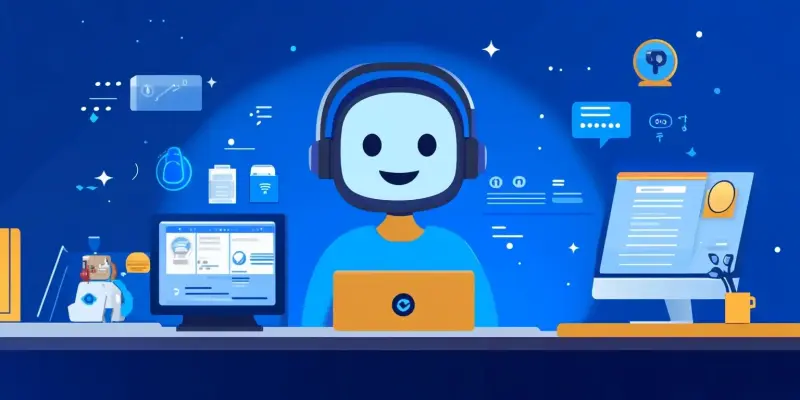In an era where customer expectations are rapidly evolving, businesses must seek innovative solutions to deliver exceptional service without compromising the invaluable human element. Artificial intelligence (AI) has emerged as a powerful tool to augment customer service operations. While AI can streamline processes and offer instant responses, it is crucial to establish a delicate balance between automated efficiency and personal interaction. This ensures that customer experiences are both efficient and personable, fostering loyalty and satisfaction. The challenge lies in integrating AI into customer service in a way that retains the human touch rather than erases it.
Human-AI Synergy
AI Assisting, Not Replacing, Human Teams
Artificial intelligence should not be seen as a replacement for customer service teams but rather as a valuable assistant that handles routine tasks, allowing human agents to concentrate on building relationships and tackling complex issues. By delegating mundane tasks to AI, companies can enhance overall efficiency without sacrificing the personal connections that are critical in customer interactions. The key to maintaining this balance is to leverage AI in a way that supports and enhances human capabilities.
Immediate Responses with Smooth Transitions
One of the significant advantages of AI, particularly chatbots, is the ability to provide immediate responses. This immediacy is a crucial factor in today’s fast-paced world, where customers expect swift answers to their questions. However, the real magic lies in the seamless transition from AI to human agents when the situation demands it. Ensuring this transition is smooth and effortless is paramount. Companies must integrate their AI systems with human agents in a way that feels natural and uninterrupted, thus maintaining the flow of conversation and resolution. This hybrid approach ensures that while speed is maintained through AI, the personal touch is never lost.
Continuous Improvement and Ethical Considerations
Feedback Loop for AI Refinement
To truly benefit from AI in customer service, it is essential to establish continuous feedback processes from both customers and employees regarding AI interactions. Collecting ongoing feedback helps refine AI systems and prevent customer frustration due to faulty or inadequate AI responses. By actively seeking input, businesses can identify areas where AI might be falling short and make necessary adjustments to improve performance and user experience.
Ethical AI and Transparency
Transparency is crucial when informing customers about whether they are interacting with AI or a human. Clear communication fosters trust and sets realistic expectations for the interaction. Moreover, safeguarding customer privacy and data must be a top priority to maintain trust.
Ethical AI involves more than just transparency; it includes implementing policies to protect data and ensure that AI systems do not perpetuate biases or unfair practices.
Proactive Support and Gradual Integration
Preemptive Issue Identification
A significant advantage of AI is its ability to identify potential issues before customers are even aware of them. This proactive support not only impresses customers but also demonstrates a commitment to their well-being and satisfaction.
Incremental Implementation of AI
In a time when customer expectations are rapidly changing, businesses need to adopt innovative solutions to provide outstanding service while maintaining the crucial human touch. Artificial intelligence (AI) has become an influential tool to enhance customer service operations. AI can streamline processes and deliver immediate responses, making customer experiences more efficient. However, it’s vital to find a fine balance between using AI for efficiency and maintaining personal interaction. This approach ensures that customer experiences are not only efficient but also friendly, which fosters loyalty and satisfaction. By thoughtfully blending AI with human elements, businesses can create a more dynamic and engaging customer experience. Balancing technology with human interaction remains essential in the quest to provide exceptional service.

